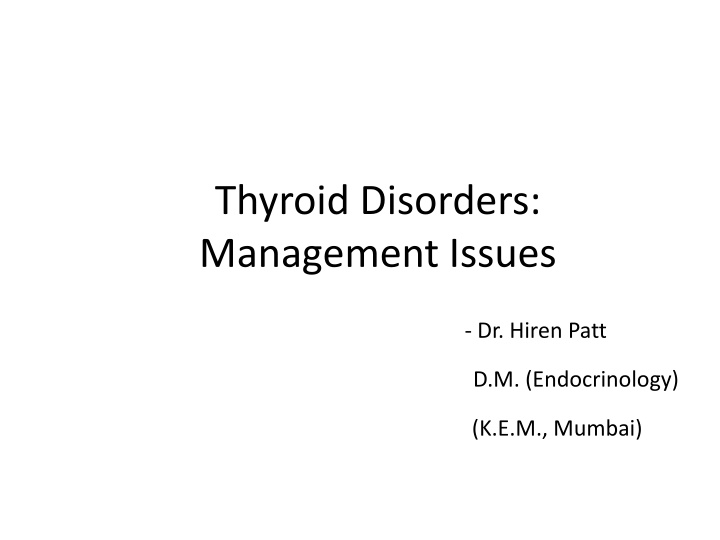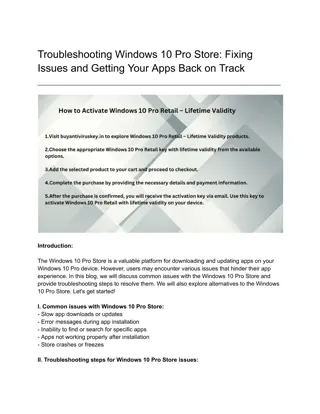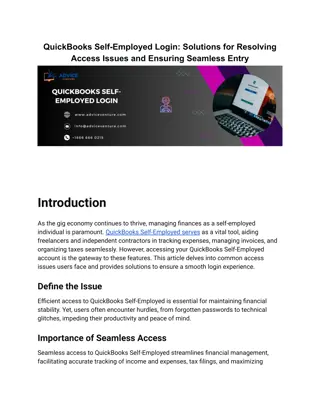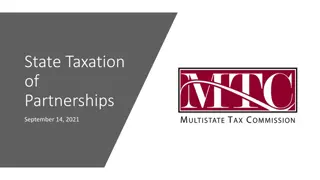Management Issues
Management issues in the treatment of thyroid disorders including T4 dose titration, subclinical hypothyroidism, and managing thyroid disorders during pregnancy. Explore factors affecting dosage adjustments, congenital hypothyroidism, and examples of patient cases. Learn about starting doses, dosage adjustments, target TSH levels, and the consequences of over and under-treatment.
Download Presentation

Please find below an Image/Link to download the presentation.
The content on the website is provided AS IS for your information and personal use only. It may not be sold, licensed, or shared on other websites without obtaining consent from the author.If you encounter any issues during the download, it is possible that the publisher has removed the file from their server.
You are allowed to download the files provided on this website for personal or commercial use, subject to the condition that they are used lawfully. All files are the property of their respective owners.
The content on the website is provided AS IS for your information and personal use only. It may not be sold, licensed, or shared on other websites without obtaining consent from the author.
E N D
Presentation Transcript
Thyroid Disorders: Management Issues - Dr. Hiren Patt D.M. (Endocrinology) (K.E.M., Mumbai)
Management Issues T4 dose titration: how & when ? Subclinical Hypothyroidism: When to treat ? Thyroid disorders in Pregnancy: how to manage ?
Factors Affecting Age Weight Lean body mass TSH/Free T4 Pregnancy/OCP: increase 30 % Etiology of hypothyroidism Total thyroidectomy (2 2.5 mcg/kg/day) > AITD (1.6 1.7 mcg/kg/day)
Congenital hypothyroidism Neonate: 10 15 mcg/kg/day < 1 year: 6 10 mcg/kg/day 1-3 years: 4 6 mcg/kg/day 3-10 years: 3 5 mcg/kg/day 10-18 years: 2 4 mcg/kg/day Adults: 1.6 1.7 mcg/kg/day
Factors Affecting Age Weight Lean body mass TSH/Free T4 Pregnancy/OCP: increase 30 % Etiology of hypothyroidism Total thyroidectomy (2 2.5 mcg/kg/day) > AITD (1.6 1.7 mcg/kg/day)
Examples 34/F Weight gain (78 -> 86), bodyache Total Thyroidectomy 6 months back TSH: > 150 mIU/l Free T4: low
Example 24/F Mood changes, bodyache Wt: 54 kg TSH: 12 mIU/l Free T4: Normal
Dosage Starting dose: 25 100 mcg/day Repeat TSH after 6 weeks Dose adjustments: 12.5 25 mcg/day Cardiac disease: start low, go slow
Case 28/F, Hypothyroidism 5 years Wt 50 kg Persistently elevated TSH levels Thyroxin dose (mcg/day) TSH 100 150 > 150 > 150 200 100 300 80 500 100
What could be the reason? Compliance Malabsorption (celiac disease/IBD/lactose intolerance) Atrophic gastritis/H.pylori infection Hemangioma/GIST/fibroblastic tumors
What could be the reason ? Food intake Ferrous sulphate Calcium carbonate PPI Antacids Sevelamer Cholestyramine Orlistat Raloxifene Dietary fiber Espresso coffee
Previous Case USG Abdomen: Liver Hemagioma (3 cm * 4 cm)
Treatment Dilemmas: To Treat or not ?
Subclinical & Overt Hypothyroidism Subclinical hypothyroidism TSH: > 4.5 mIU/L Free T4: normal Overt hypothyroidism TSH: > 4.5 mIU/L Free T4: low
Subclinical Hypothyroidism When to treat ?
Case 1 26/F Bodyache, mood swings Weight: 60 kg h/o infertility, planning ART TSH: 6 mIU/L (normal: 0.4-4) Free T4: normal
Case 2 26/F Bodyache, mood swings Weight: 60 kg TSH: 6 mIU/L (normal: 0.4-4) Free T4: normal
Case 3 70/F Weight: 60 kg TSH: 6 mIU/L (normal: 0.4-4) Free T4: normal
Which patient requires treatment ? Ans.: Case 1 Reason: infertility, Planning ART Target: keep TSH < 2.5 mIU/L before ART
What about Case 2 26/F Bodyache, mood swings Weight: 60 kg TSH: 6 mIU/L (normal: 0.4-4) Free T4: normal
Answer Treat with T4 Repeat TSH, TPO Ab > 3 months If no symptomatic improvement: stop the treatment Wait & watch Monitor: TSH, Free T4
What about Case 3 ? 70/F Weight: 60 kg TSH: 6 mIU/L (normal: 0.4-4) Free T4: normal
Answer Wait & watch Repeat: TSH, Free T4, TPO Ab after 3 months Reason: TSH increases with age & weight
Learning Points TSH > 10 mIU/L: treat TSH: 4.5 10 mIU/L with Symptoms of hypotyroidism Goitre Hemithyroidectomy Pregnancy Anti TPO Ab +
Prevalence of Hypothyroidism in Pregnancy 50.00% 40.00% 30.00% 20.00% 10.00% 0.00% Using TSH cut off 2.5mIU/L or 3.0mIU/L 44% 32% 34% Using TSH cut off 4.5mIU/L Ist Trimester 2nd Trimester 3rd Trimester 2/14/2025 15.10% 12.06% 14.36%
Universal Vs Selective Case Based Screening for hypothyroidism in pregnancy Study Study Design Sample Size TSH Cut-Off % of patients missed with hypothyroidism in pregnancy 1.Meta-analysis has shown that case-based screening can miss up to 49 Wang et al % of pregnant women with thyroid dysfunction. 81.6% Multicenter Cohort Study Case-Control Study Approx 3000 >4mIU/L 46.4% Matsuzek et al 2.Further support for advocacy of universal screening methods for thyroid disorders in pregnancy. 270 >2.5mIU/L 32% Goel et al Prospective Case Control Single Centre Case- Control Study 1,020 >2.5mIU/L 30% Vaidya et al 1,560 >4.2mIU/L 55% Horacek et al Cross Sectional 400 >3.5mIU/L 2/14/2025 Zahra Jouyandeh , Endocrine; 2015
Consensus : Indian Guideline on the Management of Maternal Thyroid disorders All should be screened at 1st antenatal measuring (IIa/B). pregnant females visit TSH by levels RV Jayakumar, ITS Guidelines for Maternal Thyroid Dysfunction , 2012. 2/14/2025
Hypothyroidism: Screening Women In Pregnancy Universal Screening: If not feasible High Risk Group: Must be Screened H/o: Autoimmune Thyroid Disease TPO Positivity Symptoms Positive Other Auto Immune Disease ( Type 1 Diabetes Mellitus ) F. H. of Auto Immune Disease Goitre H/o: Thyroid surgery, I 131 Treatment, Head- Neck irradiation > 30-35 yrs age 2/14/2025 Alex Stagnaro-Green, Thyroid,2011
Why Do We Need to Treat Thyroid Disorders in Pregnancy ?
Challenge: Complications of Hypothyroidism in Pregnancy 2/14/2025 R V Jayakumar guidelines for Management of thyroid disorder in pregnancy 2012
ATA Guidelines 2017 Rx is recommended: TSH > 10 mIU/l TSH 4-10 mIU/l with Anti TPO Ab + Rx may be considered for: TSH 4-10 mIU/l with Anti TPO Ab TSH 2.5-4 mIU/l with Anti TPO Ab + Rx is not recommonded TSH < 4 mIU/l with Anti TPO Ab -
Target TSH TSH < 2.5 mU/L
Effect of Pregnancy on Graves Disease Thyrotoxicosis improves in the 2nd & 3rd trimester of pregnancy Postpartum, symptoms increase due to a sudden rise in the level of TSH receptor stimulating antibodies Aggravated symptoms of Graves disease during the 1st trimester due to increased hCG production Reduction of TSH receptor stimulating antibody levels during pregnancy improves symptoms of Graves disease 1st trimester 2nd trimester 3rd trimester Post-partum 2/14/2025
Case 24/F 8 weeks of gestation Asymptomatic TSH: 0.01 (normal: 0.1 2.5) Free T4: normal Free T3: normal
Management ? Rx: Antithyroid drugs Tc99 Thyroid scan TSH receptor Antibody USG Thyroid
Management ? Rx: Antithyroid drugs Tc99 Thyroid scan TSH receptor Antibody USG Thyroid
Management ? Rx: Antithyroid drugs Tc99 Thyroid scan TSH receptor Antibody: Negative USG Thyroid
Management ? Wait & watch Reason: Diagnosis: Gestational thyrotoxicosis due to hCG (not Grave s disease) Common in the 1st trimester Recover by 12-16 weeks of gestation
Follow up: 20 weeks TSH: 0.01 Free T4: Normal Free T3: Normal
Why ? USG: Twin pregnancy Twin pregnancy: high hCG Wait & watch: bcz Free T4 is normal
Case 24/F 8 weeks of gestation Asymptomatic TSH: < 0.01 (normal: 0.1 2.5) Free T4: High Free T3: High TSH R Ab: Positive
Management ? Rx: 1st Trimester PTU 2nd Trimester CMZ/MMZ Monitor Free T4, TSH every 4 weekly Target TSH: Normal Free T4: High Normal (upto 20 % higher than ULN)
Effect of Pregnancy on Graves Disease Thyrotoxicosis improves in the 2nd & 3rd trimester of pregnancy Postpartum, symptoms increase due to a sudden rise in the level of TSH receptor stimulating antibodies Aggravated symptoms of Graves disease during the 1st trimester due to increased hCG production Reduction of TSH receptor stimulating antibody levels during pregnancy improves symptoms of Graves disease 1st trimester 2nd trimester 3rd trimester Post-partum 2/14/2025























